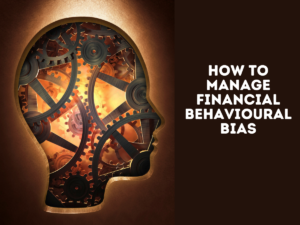By Amit Ummat
Special to Financial Independence Hub
Our firm is a tax boutique with all kinds of clients and all kinds of tax issues. They may be corporations, individuals of high net worth, business people, and entrepreneurs running smaller enterprises. They can also be retired professionals.
One of our clients is a retired doctor from Alberta who owns several Canadian properties. He moved from Alberta to Ontario so he could be close to his sister, but he still owns that property in Western Canada. However, the Canada Revenue Agency is not satisfied that his Ontario residence is his primary residence – it is – and demands back taxes.
Unfortunately, the CRA often takes the view that one is guilty until proven innocent, which is why so many people require professionals like lawyers and accountants to help them in their tax dealings with the federal government.
We also have clients with stories that are heart-breaking. And make no mistake, the CRA is anything but a purveyor of mercy when it comes to taxes. It doesn’t matter if you are a multi-millionaire or a single mother with kids whom they deem to be in tax arrears.
Regardless who you are and your particular situation, one thing everyone has in common is that no one wants to be audited. According to the CRA’s Annual Report to Parliament, in fiscal year 2020-2021 the agency conducted 245,000 audits of individual tax returns and another 41,000 audits of small- and medium-sized businesses. Generally speaking, the CRA can only audit someone up to four years after a tax return has been filed. However, in some cases — such as in suspected fraud or misrepresentation — the CRA can go farther back and, in fact, there is no time limit for such a re-assessment.
Of course, many of our clients are self-employed, but as mentioned we also represent professionals and businesses who are required to keep their own books, as well as clients who operate other cash-based businesses. It just so happens that these groups are usually audited more often than others. So, if you belong to a group that is already under some scrutiny, it’s important to audit-proof your business.
How do you do that?
Indeed, one of the most common questions we get asked is “How do we avoid audits by the CRA in the future?” Well, there is no simple way. It’s not like taking a pill. But I have compiled a list of ten tips that should help you to remain audit-proof. Let’s have a look at them:
- Check and double-check your return after you complete it. This is especially true if you do the return yourself. Keep in mind where this return goes. It goes to the Canada Revenue Agency. If they discover a mistake – even if it’s an honest mistake on your part – they may conclude it was done for a reason. I have many examples of well-documented transactions being rejected due to the taxpayer’s failure to file a routine election. This is why it’s better to avoid mistakes as much as possible.
- Keep detailed records. I cannot stress this enough. The fact is some expenses and deductions are audited more than others. I had a client recently who was reassessed vehicle benefits because he didn’t have a log book. It was a huge headache, but we got him his relief. Ensure that you keep meticulous records of all these expenses.
- Make a point of filing correctly the first time. Amended returns can and often do draw scrutiny to your filing position. I have seen people forget to report a sizeable deduction. Once it was reported on an amended T2, the CRA conducted a full-scale audit. And this is a large public corporation.
- Properly document any unusual changes to your filing position. What exactly does that mean? If you are suddenly earning double the income from one year to the next, or you are claiming an unusual capital expense, do not be afraid to explain it in your return.
- Try not to claim unrealistic deductions. Home office expenses, especially these days in the post-Covid world, are often claimed. But if you are claiming half of all your home expenses, you may be audited. Likewise, if you ascribe 100% business use to a vehicle, you may be audited for that.
- As much as possible, try to fly under the radar. In other words, do not make it easy for the CRA to single you out as a person or business that should be audited. Examples of not doing this could be things like excessive charitable donations, very low income while living in a mansion, or participating in tax shelters. All of these will raise red flags that may result in an audit.
- File on time. This is pretty basic, but you would be surprised how many people and businesses file late. There really is no excuse not to comply. Late returns are never a good idea and opening the door to a potential audit is only one of the reasons to avoid doing this. It is always better to file on time. Continue Reading…






